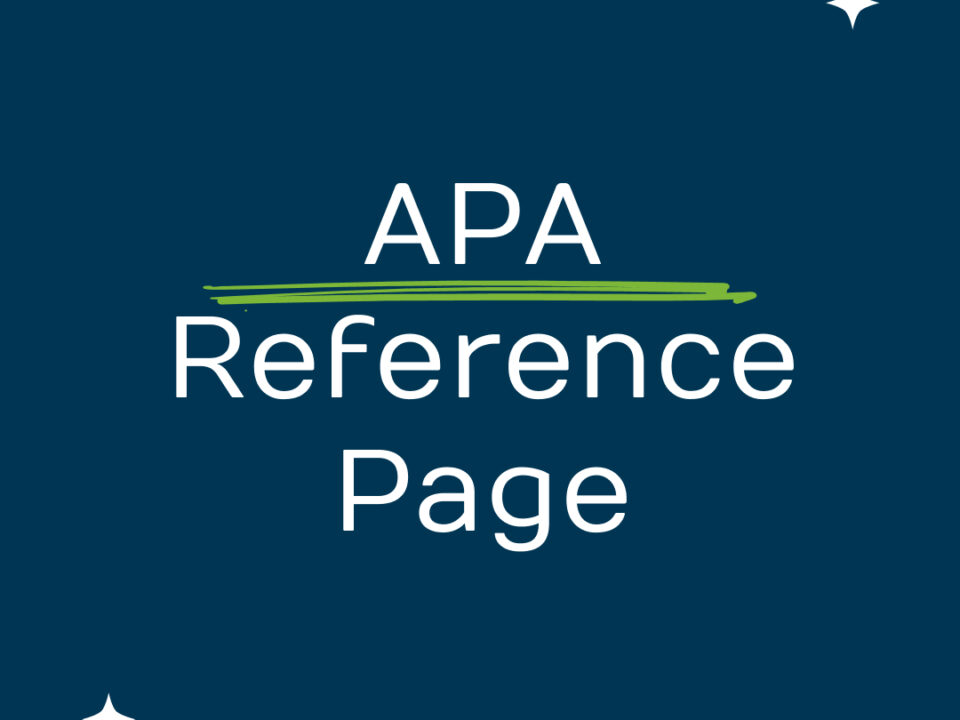
Navigating Academic Journals: Strategies for Efficient Research
December 25, 2024
How to organize research? Techniques for Organizing Your Research
December 25, 2024In this Avestina blog, we discuss “How to Write a Research Paper Introduction?” Envision begins on an expedition across the intricate terrains of academic exploration, a pursuit brimming with inquisitiveness, revelation, and cognitive victory. The introduction of your research paper serves as the first step in this process, providing a preview of the final goal and explaining the routes you will take. The beginning paragraph serves as more than a mere introduction. It functions as the initial impression, a strategic guide, and a compelling invitation, all combined into a single entity.
Amidst the vast expanse of academic literature, what entices a curious intellect to select your paper over others? The key is in formulating an introduction that not only arouses curiosity but also guarantees a significant contribution to the topic. It is a refined skill that combines accuracy with fascination, as you position your investigation within the vast framework of established studies.
Join me as we explore the intricacies of crafting an introduction that not only grabs the attention of your readers but also captivates them right from the opening sentence. Master the art of skillfully utilizing a hook by employing persuasive data, intellectually stimulating quotations, or emotionally impactful anecdotes that deeply connect with the essence of your subject matter. Recognize the significance of establishing the appropriate context, preparing the groundwork for the distinctive emphasis of your paper while avoiding overwhelming your readers with superfluous information.
Master the skill of clearly expressing both the extent of your investigation and its significance, addressing the enduring question of “why” that remains in the thoughts of your readers. How does your research address and connect gaps in the current academic discourse? How do you present your methodology and approach in a manner that is equally captivating as the research question?
Regardless of your level of expertise, we will assist you in understanding the key components of an engaging introduction. Examining the situation from a distance, let’s analyze how to concisely outline the structure of your paper, clearly presenting your thesis and important points in a manner that encompasses the entirety of your work.
The introduction serves as the initial stage of this academic journey, acting as a guiding light that assures readers of a profound and enlightening experience. Elevate the commencement of your research article from a monotonous undertaking to an authoritative and expert invitation. In essence, a skillfully crafted introduction not only informs readers about potential destinations but also persuades them of the imperative need to embark on the journey.
The Importance of a Strong Research Paper Introduction
When beginning the process of writing a research paper, a scholar engages in a dialogue with their academic community. Therefore, the initial impression establishes the foundation for the subsequent conversation. The opening of a research paper plays a crucial role in welcoming readers and providing them with an overview of the topic being examined. The significance of a robust research paper start cannot be underestimated, as it serves multiple functions in captivating the reader’s attention, summarizing the objective, and establishing the overall tone of the narrative.
An impressive introduction sets the stage for an attentive audience. At the beginning, an introduction should captivate the reader by revealing the significance of the study and why it requires their attention. The author has the chance to emphasize the importance or originality of their investigation, presenting persuasive arguments or asking questions that provoke academic interest. An effective beginning serves as an enticing hook, grabbing the reader’s attention and ensuring their commitment to exploring the complexities of the subsequent reasoning.
Moreover, introductions establish the contextual framework for the investigation. They clarify the existing knowledge, highlight areas that need more investigation, and place the research within the broader context of the field. Strong introductions create credibility and demonstrate the research’s contribution to the area by providing a clear explanation of the conceptual framework and a concise assessment of relevant literature. They provide a clear and succinct explanation of where the study fits within the current intellectual landscape and how it aims to advance the debate.
An introduction should also function as a roadmap, outlining the course of the argument. The document should clearly express the research questions or hypotheses, outlining the extent and goals of the study. A systematic introduction provides a clear overview of the inquiry and the methods used, allowing readers to understand the logical flow of the work. An intricately constructed opening instills confidence and trust in the audience by showcasing the research’s methodical and carefully planned design, setting the stage for the next conclusions.
The importance of an introduction in delivering the thesis statement is equally crucial. The focal point of this study encompasses the main argument or assertion, which will serve as the foundation for the entire work. A strong thesis statement is clear, logical, and controversial, driving the progression of the subsequent arguments. A well-crafted opening that effectively establishes a robust thesis statement guarantees that all subsequent sections, data given, and analysis undertaken are in complete harmony with and reinforce this central point.
Finally, establishing the appropriate tone is essential, and it is in the introduction where the author sets the voice of the work. Using a professional and authoritative tone, together with appropriate academic language, helps to gain respect and emphasize the gravity of the research, ultimately earning the reader’s regard. While establishing this tone, the author must also ensure that the writing remains accessible, by avoiding the use of technical language that may confuse or exclude readers who are not well-versed in the subject area.
Essentially, the beginning of a research paper serves as the author’s initial interaction with the readership, where the writer must establish the importance, direction, and credibility of their work. An effective research paper opening generates anticipation and primes the audience for a meaningful intellectual discourse. It serves as a pivotal point on which the legitimacy and influence of an academic investigation rely. The introduction serves as a crucial starting point for a thorough study, as it cannot only inspire and inform but also convince and succeed. Therefore, it is crucial to invest in every possible endeavor to ensure that it is perceptive, suggestive, and enduringly robust.
The role of the research question in shaping the introduction
The research topic serves as the fundamental basis of any academic investigation, offering a distinct focal point and guidance for the study. The essential aspect not only guides the study but also significantly shapes the opening of a research paper or proposal. Creating a captivating opening is essential for grabbing the reader’s attention, establishing the background, and establishing the groundwork for the research. This essay examines the impact of a well-crafted research question on the creation of a compelling beginning in academic writing.
The Significance of Developing a Research Question
A research question is not simply a question, but rather an explicit declaration that clearly outlines the scope and objectives of the investigation. Formulating a research question entails pinpointing a distinct problem, deficiency in understanding, or matter that justifies investigation. The research question must possess precision, be capable of being answered, and hold significance within the subject of study. Developing a robust research question necessitates a comprehensive grasp of the prevailing literature, recognition of contemporary concerns, and anticipation of the ramifications of future discoveries.
Read: Beyond Copy-Paste: Examining the Varied Types of Plagiarism in Academia
Establishing the atmosphere and guiding the course in the introduction
The opening of a research paper establishes the foundation for the full study. The research question plays a complex and varied influence in determining the introduction. Its purpose is to promptly acquaint readers with the main subject of the study. Authors set the central focus of the subsequent debate by presenting the research topic early in the introduction. This deliberate positioning establishes the overall direction of the investigation and indicates to the reader what they can anticipate from the document.
Providing Background and Reasoning
An effectively formulated research question, integrated into the introduction, facilitates the development of the required background information. Researchers establish the context by examining pertinent literature, defining the problem area, and emphasizing the importance of answering the stated topic. The research question serves as the foundation for the study, providing a valid reason for why the investigation is worthwhile. This contextual grounding assists in clarifying the significance and uniqueness of the research, therefore establishing its value in contributing to the area.
Building Momentum with a Consistent Storyline
The research topic not only establishes the direction and context but also contributes to the development of a cohesive narrative flow in the introduction. Every component of the introduction, including the overall context, the identification of the research problem, and the study’s objectives, systematically progresses toward and reinforces the research question. By connecting these elements with the fundamental question, the authors guarantee that the introduction flows seamlessly, with each component contributing to a captivating and convincing storyline.
Advantages of Co- authoring Participation
Providing a clear explanation of the extent and restrictions
A well-crafted introduction clearly defines the extent and constraints of the research, and once again, the research question plays a significant role in shaping it. Researchers implicitly establish the scope of their study and what falls outside of it by setting specified boundaries when formulating a topic. It provides the reader with a clear understanding of the scope and range of the research. In addition, a well-defined research question can identify topics that fall outside the intended scope, thereby controlling readers’ expectations regarding the study’s extent of coverage.
Groundwork for Methodology and Hypotheses Preparation
Finally, a concise introduction that presents a well-defined research issue establishes the framework for the methods used and the hypotheses developed in the study. The selection of methodologies and instruments is typically based on their ability to adequately tackle the research inquiry. Similarly, hypotheses are statements that exactly correspond to the initial question asked. Thus, by introducing the research topic at the beginning, it becomes firmly established in the readers’ thoughts, enabling them to better understand and appreciate the methodological decisions and predictions presented in the following portions of the work.
The significance of the research question in influencing the introduction of scholarly work cannot be exaggerated. The core of the research endeavor plays a vital role in organizing the thematic and structural composition of the introduction. It brings together important components such as context, justification, scope, and methods. A precisely crafted research question serves as a unifying force that brings together different elements of the introduction into a coherent story, ensuring that readers stay focused and interested. Hence, it is crucial to carefully evaluate and formulate the research topic, as its effectiveness and clarity have a significant impact on the entire research paper or proposal, starting from a captivating introduction.
10 tips for writing an effective introduction to original research papers
1. Begin with a general approach and then gradually focus on specific details.
Begin the first paragraph by providing a concise overview of the general field of research, and thereafter reduce your attention to the specific issue you are investigating. This will aid in situating your study topic within the wider discipline, so increasing its accessibility to a broader readership, beyond only experts in your field.
2. Clearly articulate the objectives and significance
Papers that are rejected for “failing to demonstrate the significance of the topic” or “lacking a clear motivation” often overlook this aspect. Clearly state your desired outcome and explain the reasons why your reader should be intrigued by the prospect of discovering whether you are successful in achieving it. The fundamental framework can be as uncomplicated as “Our objective is to accomplish X, which holds significance because it will result in Y.”
3. Provide comprehensive citations without going overboard.
After narrowing your research focus to a certain issue, it is important to extensively review the most recent and relevant literature related to your study. Ensure that your literature review is comprehensive, yet concise. Keep in mind that you are not writing a review article. If you discover that your introduction is excessively lengthy or filled with numerous citations, a potential remedy is to reference review articles instead of including all the individual articles that have already been condensed in the review.
Unveiling the Mystery: How to Get Your Research Published in ISI Journals?
4. Refrain from providing excessive citations for a single point.
The sentence states that multiple research has discovered a notable connection between X and Y, with references ranging from 4 to 15. This statement references an excessive number of studies simultaneously. While references [4-15] may offer a comprehensive understanding of the subject matter, this phrase lacks sufficient context or explanation for these previous studies. If all of these sources are deemed worthy of citation, they should be further addressed with greater clarity. An evident correlation has been discovered between X and Y in males [4-7], females [8-11], and minors [12-15].
5. Articulate your hypothesis or research topic concisely and unambiguously.
When conducting research in empirical sciences, formulating a hypothesis can be a highly successful method of structuring the investigation. As an illustration, rather than expressing “In this study, we show that X is related to Y by method A,” you may express it as “In this study, we propose that X is correlated with Y, and we employ method A to experimentally verify this proposition.” If you are conducting research in the formal sciences or engaging in exploratory research, it would be advisable to articulate a research question instead. “This study aims to investigate the research question: Does X correlate with Y?” It is important to understand that the research question does not necessarily need to be phrased as a question. Instead, it can be presented as a statement, such as “In this study, we examine the relationship between X and Y.” Hypotheses and research questions are valuable tools as they provide structure to the work and act as “signpost phrases” that facilitate a seamless navigation for readers.
6. Provide a concise summary of the paper
The prevalence of an organizational overview varies across different fields. It is prevalent in technology, but less prevalent in medicine. If it is suitable for your topic, you may want to include a section-by-section summary of your work in the final paragraph of your introduction. As an illustration, “In Section II, we elucidate our analysis techniques and the datasets we employed. Section III is dedicated to presenting the outcomes. In Section IV, we analyze the outcomes and make a comparison between our discoveries and the existing research. Within Section V, we provide our findings and propose potential areas of investigation for further research.
7. Maintain brevity
Strive to refrain from using an excessively lengthy introduction. An optimal word count range is often between 500 and 1000 words. However, for the most accurate recommendations, it is advisable to consult the journal’s rules and review previous issues.
8. Demonstrate through actions rather than explaining verbally.
An objective of the introduction is to elucidate the significance of your research issue and justify its merit for further investigation. A frequently encountered mistake is to merely state, “Subject X is significant.” Instead of merely stating the significance of the topic, provide evidence or reasons to support its importance. As an illustration, instead of stating “The development of new materials is important for the automotive industry,” you could state, “The development of new materials is essential for the automotive industry to fabricate more robust and lighter vehicles, thereby enhancing safety and fuel efficiency.”
9-Avoid overwhelming your readers with much detail.
If your work belongs to a field that typically provides a summary of the major findings before delving into the methodology, it is advisable to refrain from presenting excessively detailed results. This is because these results require more elaboration in subsequent sections of your paper to be comprehended accurately. Instead of stating “Our algorithm requires 55% of the memory and 45% of the computation time of the conventional algorithm,” it is generally more effective to provide a broad summary of the results in the introduction: “In this study, we compare the proposed algorithm to a conventional algorithm in terms of memory utilization and computational efficiency, demonstrating that the proposed algorithm is both more compact and faster.” While past style guides may have recommended delaying the major result to create suspense, contemporary journals in various fields, except medicine, now advocate for providing a preview of the primary results in the introduction.
10. Verify the specifications of the journal
Several academic publications have precise criteria for the introduction section outlined in their rules for authors. For instance, the instructions may specify a maximum limit for the number of words or demand certain content, such as a hypothesis statement or a summary of the primary findings.
Conclusion
As we conclude our scholarly trek through the art of writing an effective research paper introduction, let’s take a moment to reflect on the path we’ve traversed. A captivating beginning is more than just a traditional gateway; it’s the beckoning voice enticing your audience to embark upon a journey of knowledge and discovery with you. It sets the scene for a narrative that weaves expertise, analysis, and innovative perspectives into the rich tapestry of academia.
Armed with the insights from this Avestina blog, you now understand that the key to unlocking your reader’s attention lies within a well-crafted introduction. By striking a delicate balance between intrigue and informative clarity, you have the power to transform a mundane overview into a cornerstone that solidifies the importance and uniqueness of your work. It’s about pitching your voice to resonate across the fields of your peers, setting the tempo for the dialogue that is to ensue.
Remember, the introduction is your research paper’s handshake with the world – firm, confident, and indicative of the valuable insight to follow. Through this initial interaction, launch into your academic odyssey with poise, ensuring your readers are as invested in the outcome as you are. As you continue to cultivate the artistry behind the introductions of your future papers, may they serve not merely as opening remarks but as grand halls echoing with the promise of exciting revelations to come.
Thank you for joining us on this enlightening expedition. We trust this guide has endowed you with the tools to entice, inform, and inspire. Your next piece of work isn’t just another addition to the vast sea of academic papers; it’s your opportunity to shine and contribute a lasting legacy to your field. So approach that blank first page with renewed confidence. Remember, every great discovery starts with the courage to say that first word. Write bravely, write boldly – your audience awaits.


